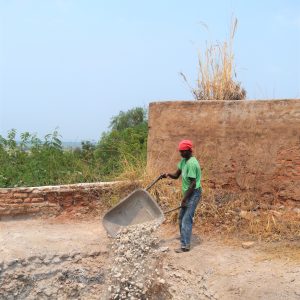Date: May to December 2018
Raw materials: Development Minerals (clay, stone aggregate, dimension stones, sand, limestone, salt and kaolin)
Location: Uganda
Challenge: understanding the under-studied Development Minerals sector in Uganda
Development Minerals – which include minerals and materials that are mined, processed, manufactured and used domestically in industries such as construction, manufacturing, infrastructure and agriculture – have been historically marginalised in development planning. They are nevertheless thought to contribute significantly to income generation and employment, and to increase the availability of resources required for growth and sustainable development (see UNDP studies). The African, Caribbean and Pacific Group of States, with support from the European Union, are therefore seeking to build the profile and improve the management of Development Minerals. A key ingredient is to ensure the availability of baseline data that demonstrates the value of the sector and so affords it a place at the table in policy planning. To support this aim, Levin Sources was hired to conduct a baseline study and market assessment of the Development Minerals sector in Uganda.
Solution: in-depth field analysis and market assessment
With a particular emphasis on artisanal and small-scale mining (ASM) operators and related micro- and small-enterprises (MSEs), the study aims to provide a foundation for evidence-based policy and decision-making in Uganda. The approach included profiling the economic significance, scope and potential of the sector, as well as fostering an understanding of the sector’s technical, legal, social, occupational and environmental challenges and opportunities. Whilst there are many different kinds of Development Minerals, 8 were selected as priority minerals in collaboration with the programme and the Ugandan government. These were clay, stone aggregate, dimension stones, sand, limestone, salt and kaolin. For each mineral, Levin Sources conducted a gap analysis followed by extensive primary and secondary research at mine sites and along the value chain. The findings were analysed and interpreted using tried and tested techniques to provide a comprehensive overview of the sector that enabled the government to understand trends and draw conclusions to support well-informed policy decisions.
Levin Sources also conducted a separate, detailed market assessment that made links between the production and trade of development minerals and market demand. This led to concrete recommendations as to how the sector can be better incorporated into domestic and regional markets, including as a strategy for import substitution.
Results: towards inclusion of Development Minerals in the draft minerals policy
The final result of the work was the publication of a baseline and market assessment on Development Minerals in Uganda. Following the publication of the studies, the government of Uganda cited the work in their draft minerals policy (2018), including recommendations for the expansion of the legal definition of ’minerals’ to include Development Minerals, and the development of specific regulations for the sector to create a better enabling environment in which Development Minerals can contribute to “the socio-economic development and transformation of Uganda”.



